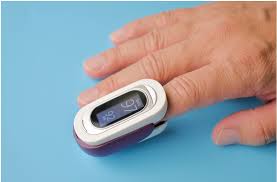Pulse oximetry is a noninvasive technique to measure fresh air levels with your blood flow. It is a uncomplicated method that will help health care professionals analyze how good your system is acquiring o2. Fresh air is essential for our body to operate effectively, and absence of oxygen can lead to significant health problems. In this posting, we’ll go over in more detail about pulse oximetry, the way it operates, when it’s required, and what the outcome mean for our well being.
How does pulse oximetry work?
what is pulse oximetry is a straightforward examination which uses a health-related system called a pulse oximeter. The indicator of the pulse oximeter usually clips onto a finger, toe, or earlobe. It shines two beams of light-weight, one particular red-colored and also the other infra-red, from the blood within your finger or earlobe. Oxygen-abundant hemoglobin absorbs the reddish light, although oxygen-bad hemoglobin soaks up the infrared light. The detector measures light passed on via your cells and determines your o2 saturation levels, which is a share of your highest quantity of oxygen your blood flow can have.
When is pulse oximetry needed?
Pulse oximetry is a vital device in numerous medical options, which include private hospitals, unexpected emergency spaces, and ambulances. It is also used in identifying and tracking various medical conditions for example asthma attack, persistent obstructive pulmonary sickness (COPD), pneumonia, and lung diseases. Aside from this, pulse oximetry is also applied during surgical procedure and in intense attention models to keep track of the patient’s o2 saturation degrees.
What perform the effects imply?
Normally, a person’s o2 saturation stage drops between 95 and 100 percent. Nevertheless, in many health conditions, the oxygen saturation degree may decline below 90 %, showing not enough oxygen in the body’s cells. In such a condition, the-care skilled might need to intercede to improve the blood fresh air ranges. Even so, it’s worth noting that lower oxygen saturation ranges usually are not always an indication of a medical emergency.
Benefits of pulse oximetry:
Pulse oximetry is a noninvasive, uncomplicated, and fast examination that you can do without demanding a great deal of products. It can be used in individuals of every age group, from neonates to more mature grownups. It’s also a crucial device in distant locations, where laboratory checks and gear may be minimal, helping medical doctors and healthcare professionals measure the patient’s problem or fresh air saturation levels, that can help determine if a person requires additional medical treatment.
In short:
Pulse oximetry is a crucial instrument that permits healthcare professionals to observe fresh air degrees in patients swiftly and effectively. It’s a noninvasive and pain-free examination, which makes it an invaluable device in evaluating oxygen saturation degrees and detecting health conditions. As being an affordable and transportable examination, it is also a vital tool in distant areas in which medical facilities are restricted. Not enough fresh air in the body can result in serious health problems, emphasizing the value of using pulse oximetry like a analysis resource within both emergency and non-urgent medical conditions.



